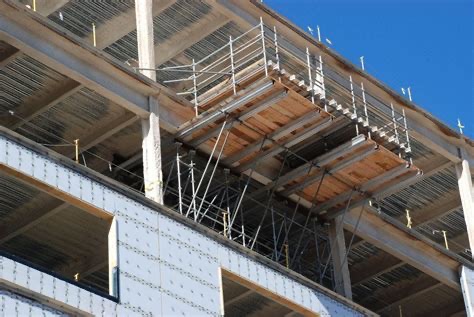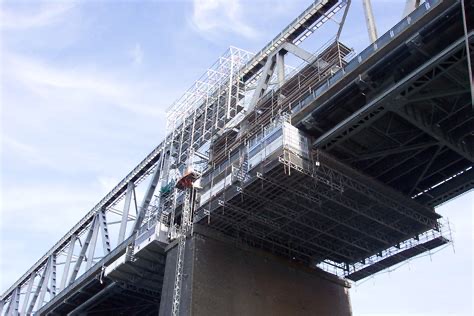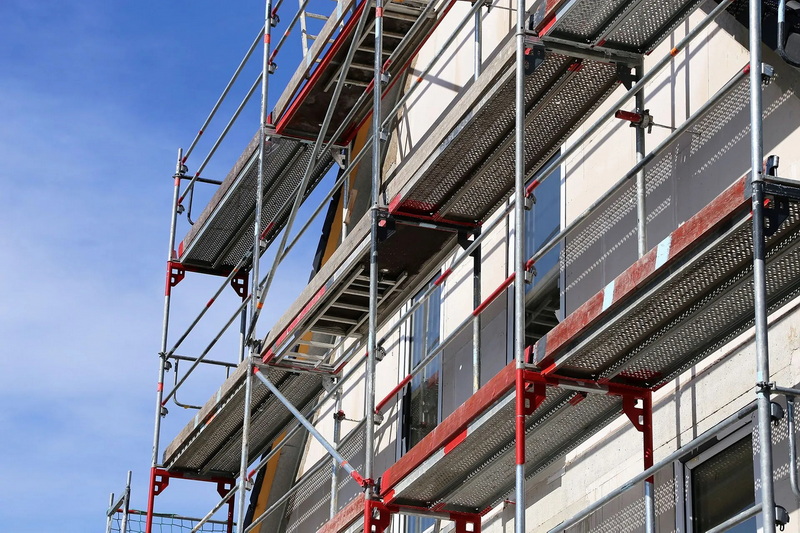Content Menu
● Understanding Cantilever Scaffolding
● Key Advantages of Cantilever Scaffolding
● How Cantilever Scaffolding Saves Time
>> 1. Rapid Setup and Takedown
>> 2. Reduced Labor Costs
>> 3. Simultaneous Operations
● Cost Savings Associated with Cantilever Scaffolding
>> 1. Lower Material Costs
>> 2. Minimized Downtime
>> 3. Long-Term Savings
● Practical Applications of Cantilever Scaffolding
● Conclusion
● FAQ
>> 1. What is cantilever scaffolding?
>> 2. How does cantilever scaffolding save time during construction?
>> 3. What are the safety features of cantilever scaffolding?
>> 4. In what types of projects is cantilever scaffolding most beneficial?
>> 5. Are there long-term cost savings associated with using cantilever scaffolding?
● Citations:
In the construction industry, efficiency and cost-effectiveness are paramount. One innovative solution that has gained traction is the cantilever scaffolding system. This unique scaffolding design offers numerous advantages that can significantly save time and costs during construction projects. In this article, we will explore how cantilever scaffolding can enhance productivity, reduce labor expenses, and streamline the construction process.

Understanding Cantilever Scaffolding
Cantilever scaffolding is a type of scaffold that extends horizontally from a support structure without the need for vertical supports directly beneath it. This design allows for unobstructed access to work areas, making it ideal for projects where space is limited or where traditional scaffolding would be impractical.
Key Advantages of Cantilever Scaffolding
1. Access to Difficult Areas
- Cantilever scaffolding provides access to areas that may be obstructed by other structures or features, such as balconies or overhangs. This is particularly beneficial for renovation or maintenance projects on existing buildings where traditional scaffolding may not fit.
2. Minimized Ground Obstruction
- The design of cantilever scaffolding eliminates the need for vertical poles and frames in front of the work area, maximizing usable space on the construction site. This is especially advantageous in narrow or congested work environments.
3. Ease of Assembly and Disassembly
- Cantilever scaffolding systems are designed for quick assembly and disassembly. Many components can be pre-assembled at ground level before being lifted into position, reducing the time spent on-site and minimizing risk.
4. Cost-Effectiveness
- By reducing labor requirements and speeding up the assembly process, cantilever scaffolding can lead to significant cost savings. The elimination of ground-level obstructions also means fewer materials are needed for support structures.
5. Enhanced Safety Features
- Safety is a critical concern in construction. Cantilever scaffolding can be equipped with guardrails and safety nets to protect workers from falls, ensuring a safer working environment.
How Cantilever Scaffolding Saves Time
1. Rapid Setup and Takedown
The quick assembly process associated with cantilever scaffolding translates directly into time savings on construction projects. With fewer components to connect and the ability to pre-assemble parts, crews can erect the scaffold faster than traditional systems.
2. Reduced Labor Costs
Fewer workers are needed to manage the setup and takedown of cantilever scaffolding compared to traditional methods. This reduction in labor not only saves money but also allows project managers to allocate resources more efficiently.
3. Simultaneous Operations
Cantilever scaffolding allows for work to be conducted over obstacles without disrupting ground-level operations. This means that multiple tasks can be performed concurrently, further accelerating project timelines.

Cost Savings Associated with Cantilever Scaffolding
1. Lower Material Costs
The efficient design of cantilever scaffolding reduces the amount of material required for support structures, leading to lower overall material costs. Additionally, its reusability means that investments in scaffolding can pay off over multiple projects.
2. Minimized Downtime
By allowing workers to access elevated areas without interfering with ground-level activities, cantilever scaffolding minimizes downtime on construction sites. This efficiency can lead to quicker project completion times and improved profitability.
3. Long-Term Savings
Investing in a cantilever scaffolding system can yield long-term savings through its durability and reusability. The robust design means that it can withstand repeated use without significant wear and tear, making it a cost-effective choice for ongoing projects.
Practical Applications of Cantilever Scaffolding
Cantilever scaffolding is versatile and can be used in various applications:
- Building Renovations: Ideal for accessing hard-to-reach areas during renovations.
- Bridge Maintenance: Provides safe access for maintenance crews working on bridge structures.
- Window Installations: Facilitates easy access for window installation or repairs.
- Facade Work: Allows workers to safely perform tasks on building facades without obstruction.
Conclusion
The cantilever scaffolding system presents a compelling solution for construction projects looking to save time and costs while enhancing safety and efficiency. Its unique design allows for easy access to difficult areas, minimizes ground obstruction, and streamlines assembly processes—all contributing to significant savings in labor and materials.
By incorporating cantilever scaffolding into your project plans, you can optimize workflow, reduce downtime, and ultimately improve your bottom line.

FAQ
1. What is cantilever scaffolding?
Cantilever scaffolding is a type of scaffold that extends horizontally from a support structure without vertical supports beneath it, allowing access to hard-to-reach areas while minimizing ground obstruction.
2. How does cantilever scaffolding save time during construction?
Cantilever scaffolding saves time through its rapid setup and takedown processes, reduced labor requirements, and ability to allow simultaneous operations without disrupting ground-level activities.
3. What are the safety features of cantilever scaffolding?
Cantilever scaffolding can be equipped with guardrails, safety nets, and other safety features designed to protect workers from falls and ensure a secure working environment.
4. In what types of projects is cantilever scaffolding most beneficial?
Cantilever scaffolding is particularly beneficial in building renovations, bridge maintenance, window installations, and facade work where access to elevated areas is required without obstructing ground-level operations.
5. Are there long-term cost savings associated with using cantilever scaffolding?
Yes, cantilever scaffolding offers long-term cost savings through its durability, reusability, lower material costs due to efficient design, and minimized downtime during construction projects.
Citations:
[1] https://scaffoldtype.com/cantilever-scaffolding/
[2] https://peakscaffolding.ca/the-benefits-of-ringlock-scaffolding/
[3] https://scaffoldtype.com/cantilever-scaffolding-benefits/
[4] https://www.erectastep.com/blog/eliminating-rented-scaffolding-saves-money/
[5] https://constrofacilitator.com/what-is-cantilever-scaffolding-its-advantages-types-applications/
[6] https://spectrum.library.concordia.ca/985585/13/Siddappa_MASc_S2019.pdf
[7] https://www.hunanworld.com/news/advantages-of-cantilevered-scaffolding
[8] https://aaitscaffold.com/blog/how-to-save-time-and-labour-during-scaffold-assembly-and-dismantling/






















